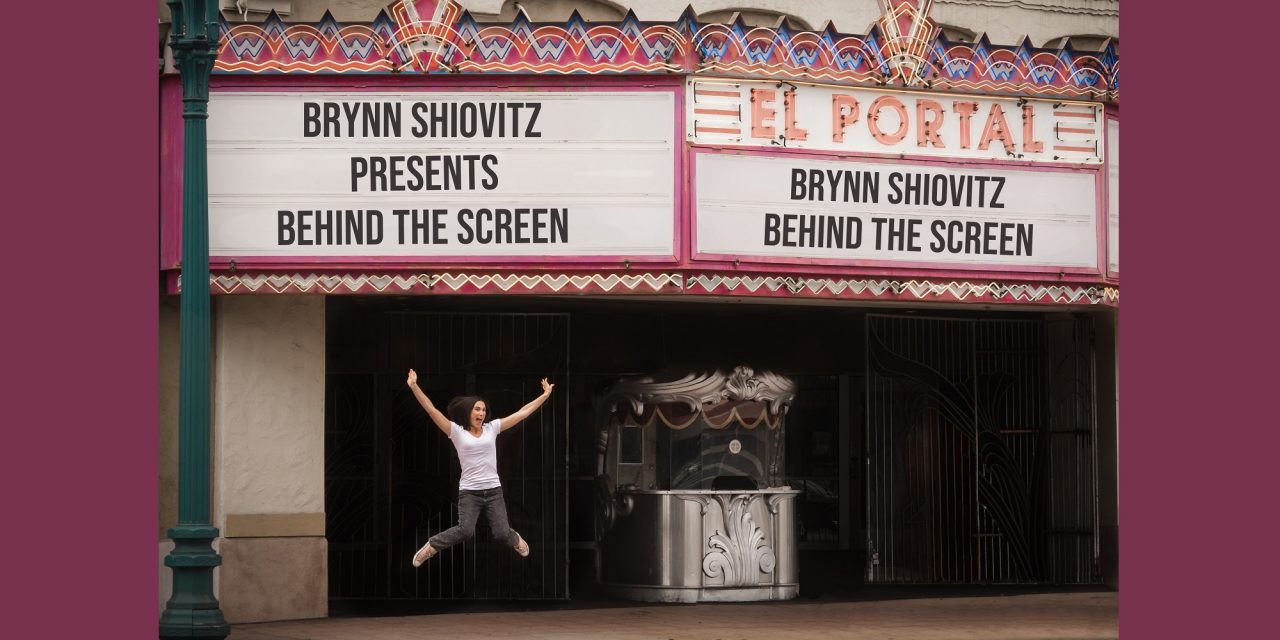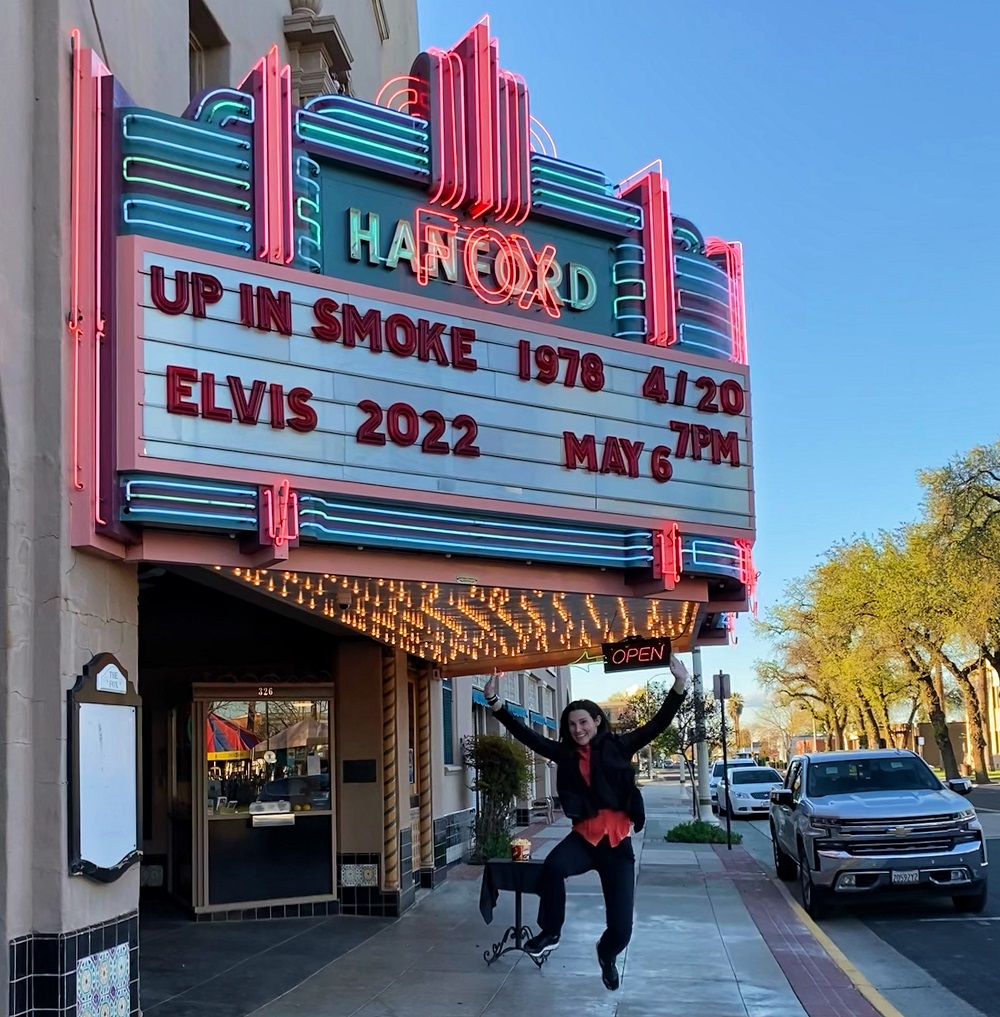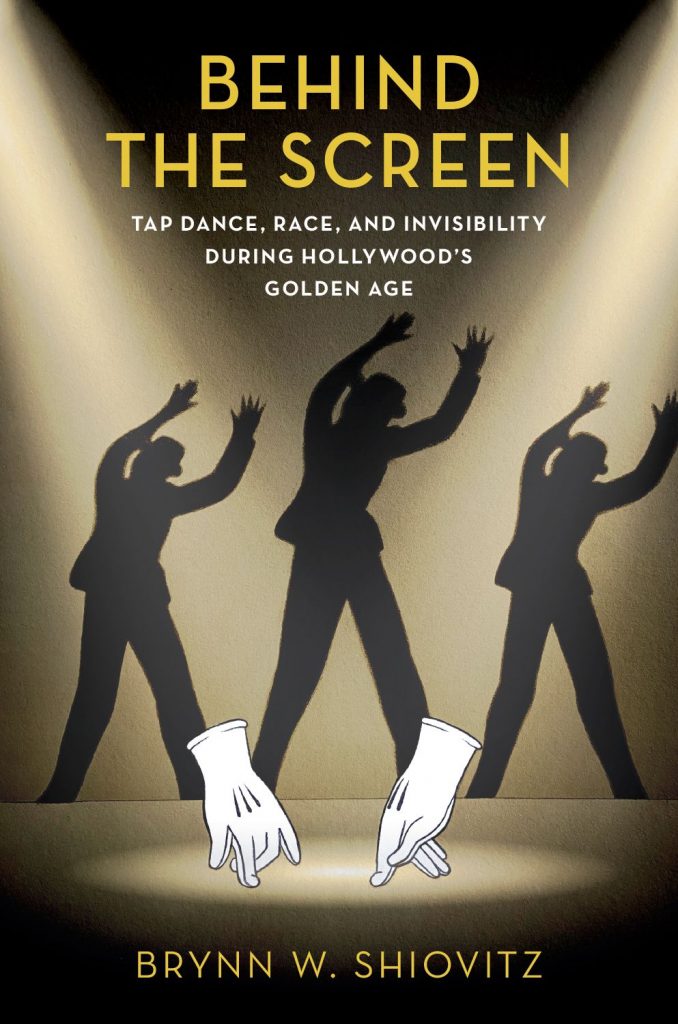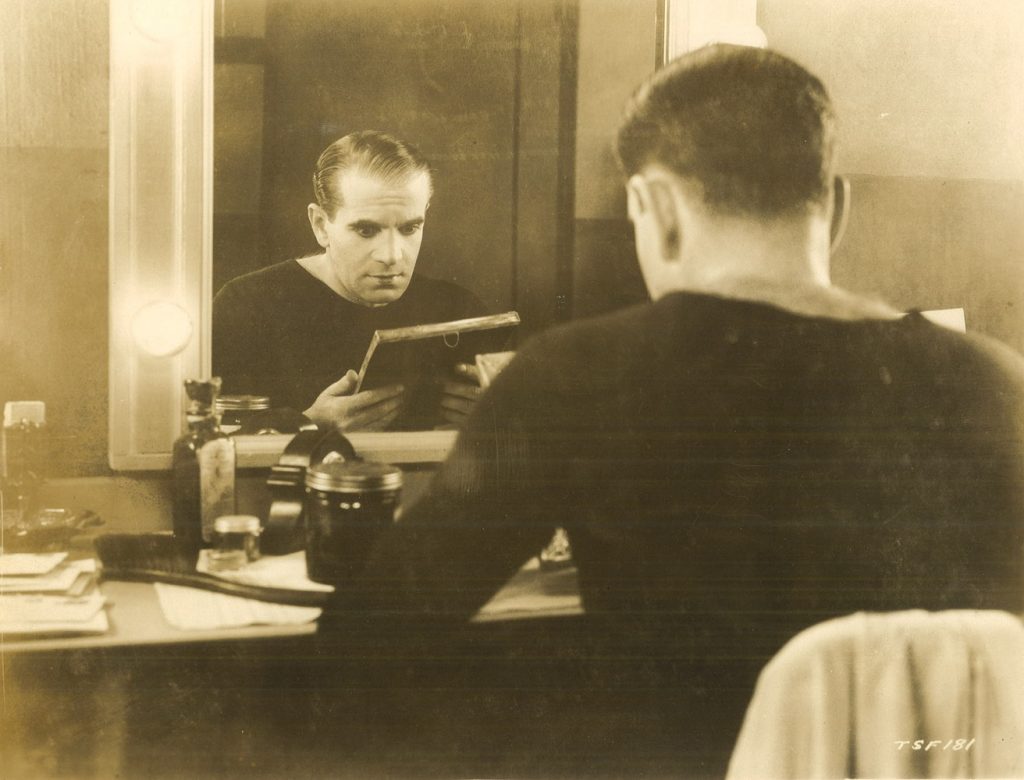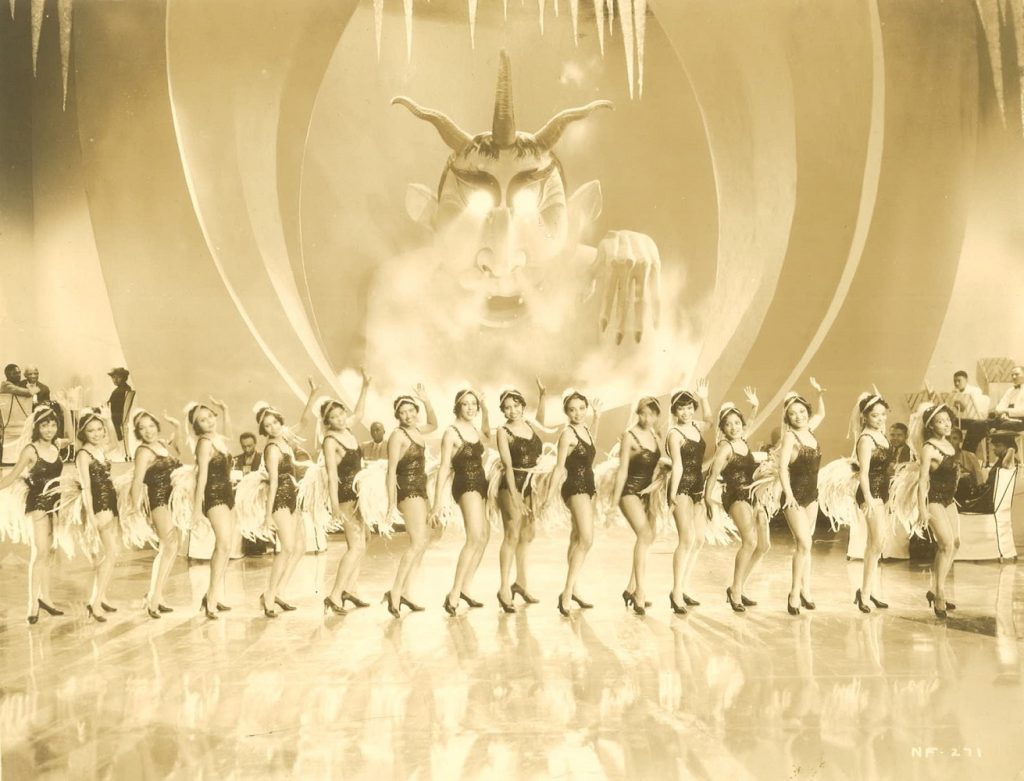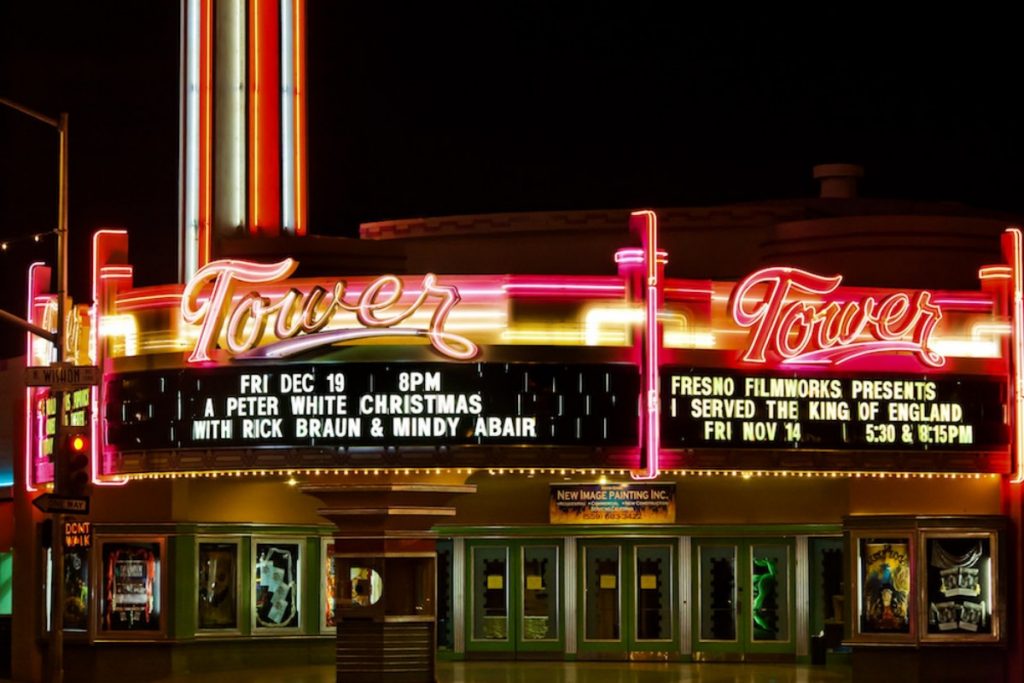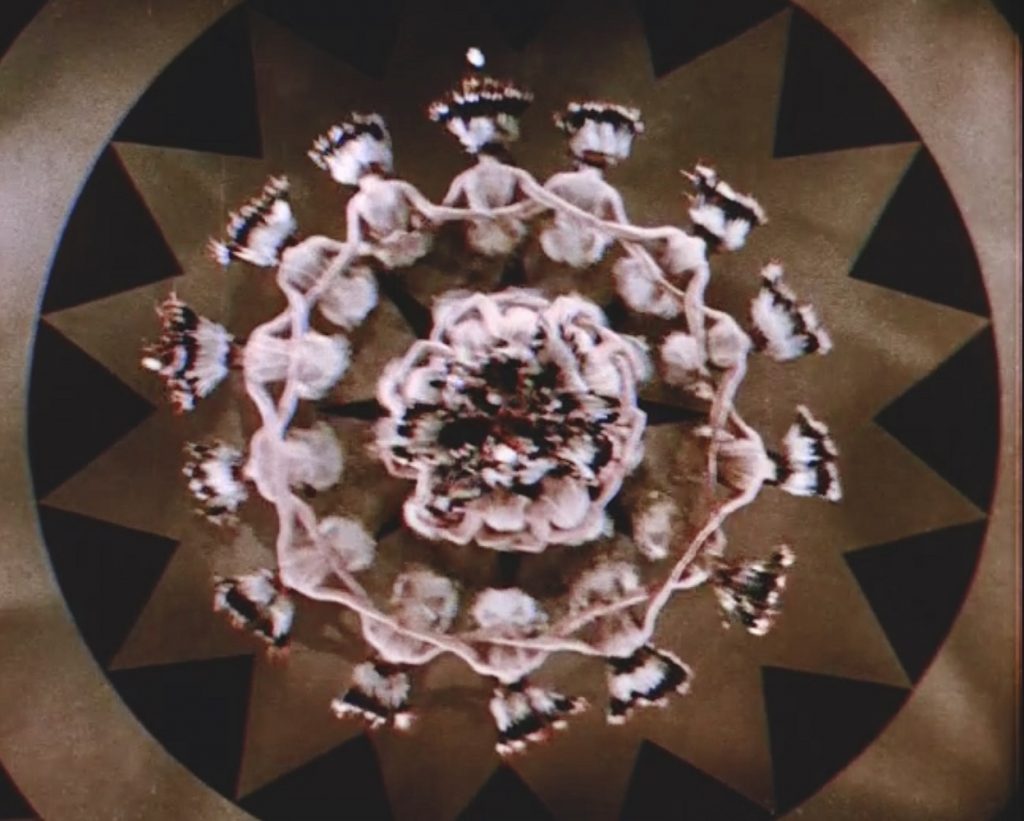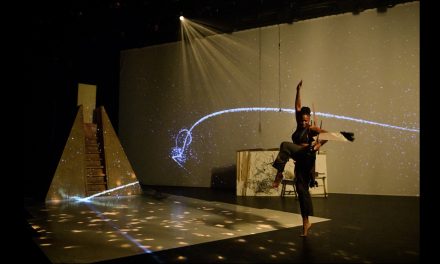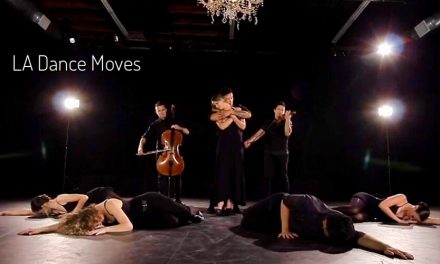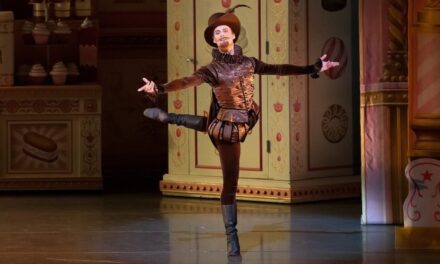People around the world began working on creating motion pictures in the late 1800s. In the United States, Thomas Edison invented the phonograph and later commissioned William Kennedy Laurie Dickson, a young laboratory assistant, to invent a motion picture camera in 1888. It was French filmmaker Georges Méliès’s 1902 Le Voyage dans la Lune (A trip to the Moon), however, that became the first film to achieve international distribution. Silent films were introduced in 1910 and continued until “talkies” were introduced in 1927.
The first Academy Awards presentation was held on May 16, 1929, at a private dinner function at The Hollywood Roosevelt Hotel with an audience of about 270 people. The first Black person to receive an Oscar was Hattie McDaniel in 1940 for her performance of mammy in Gone With the Wind. Twenty-four year later, Sidney Poitier became the first Black man to win an Oscar for his role in Lilies of the Field. In 2002, Denzel Washington and Halle Berry both won lead acting awards in the same year. There have been Black people and other “people of color” who have taken home Oscars in the other film categories but it was not until this year that actress Michelle Yeoh became the first Chinese American Actress to win a Best Actress award for her lead role in Everything Everywhere All at Once. She was only the second woman of color to win Best Actress, the other being Halle Berry.
Writer, scholar, educator, and dancer Brynn Shiovitz has recently written Behind the Screen: Tap Dance, Race, and Invisibility During Hollywood’s Golden Age (Oxford, March, 2023). In her words, “the book explores a history of audible blackface and more covert forms of racial masquerade in live action film and animation during the 1930s and 1940s.” A review of Shiovitz’s book is scheduled to appear at LA Dance Chronicle in late April – early March, 2023.
I was directed to Shiovitz’s book by my dear friend and colleague, Lynn Dally who has performed and taught Tap around the world and for several decades was the Artistic Director of the extraordinarily successful Jazz Tap Ensemble, a tap company that always performed onstage alongside jazz musicians. One of the first scholars to write about tap was Constance Valis Hills the author of “Brotherhood in Rhythm: The Jazz Tap Dancing of the Nicholas Brothers” (Cooper Square Press, 2000) and “Tap Dancing America, A Cultural History (Oxford University Press, 2010).”
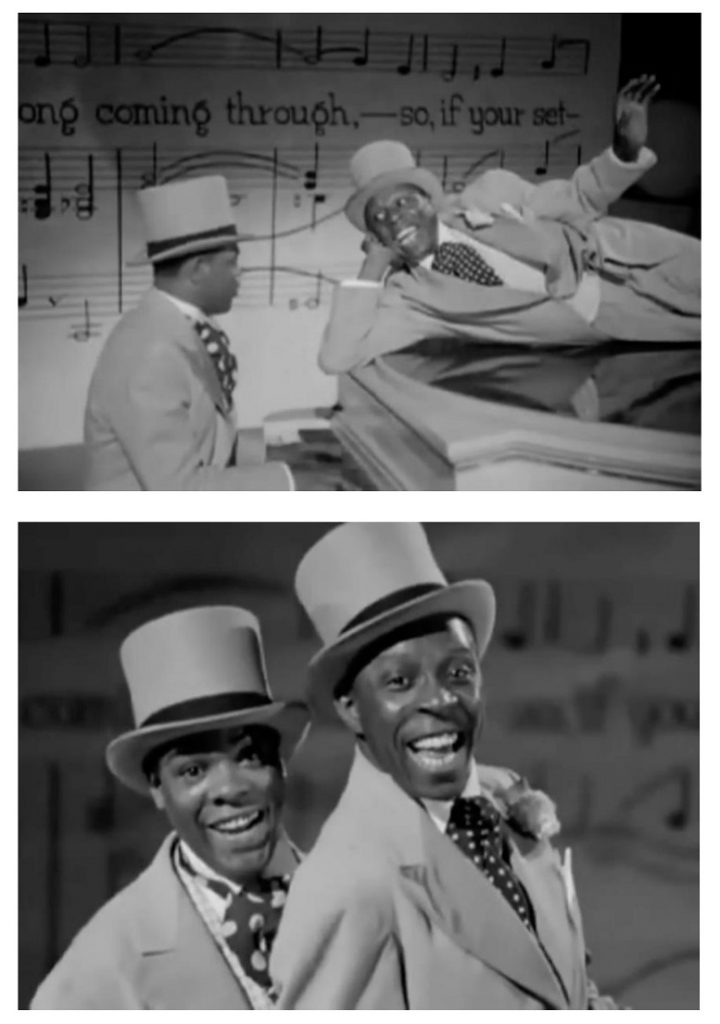
Ford Lee “Buck” Washington and John “Bubbles” Sublett perform a song and dance medley in Varsity Show, 1937. (courtesy of author)
Finding a publisher can be difficult, so I asked Shiovitz about her experience. “Oxford University Press has always been more supportive of tap and more vernacular styles, so that is where I started,” She said.
Shiovitz, is currently a Lecturer in the Department of Dance at Chapman University. She has self-designed a very unique book signing tour which takes place in old movie houses, some of which were originally vaudeville houses or silent film theaters. Those that are located in California include: Hanford Fox Theater, Hanford CA.; Tower Theater, Fresno, CA.; Art Theater, Long Beach, CA. (April 30); Pomona Fox Theater, Pomona, CA.; Alex Theater in Glendale, CA.; Fox Theater Bakersfield, Bakersfield, CA.; Fox Fullerton, Fullerton, CA. (Rhapsody in Taps Tap Festival, May 7); Crest Theater, Sacramento, CA.; State Theater, Modesto, CA.; Paramount Theater, Oakland, CA.; and Star Theater, Oceanside, CA.
Outside California, Shiovitz has booked signings at: Mayan Theater in Denver, CO.; Varsity Theater, in Seattle, WA.; Logan Theater in Chicago, IL.; Lafayette Theater in Suffern, NY.; TAP CITY NY (Flamenco Viva Studios, July 6); Symphony Space in New York, NY.; Ambler Theater in Ambler, PA.; Everett Theater in Middletown, DE.; and the Senator Theater in Baltimore, MD.
Her book tour began in Hanford, California at the Historic Hanford Fox Theatre, one of the few remaining still in operation and fully restored to its 1929 elegance. It has the original fireproof screen: an oil painting that fills the entire stage opening. It depicts a Spanish village with a church bell tower, cypress trees, and terra cotta roofed buildings. This Fox Theater has a full operational orchestra pit and an original Wurlitzer pipe organ.
Shiovitz admitted that no one came to the Hanford signing, but that is was worth the trip because she received tour of the theater and “They made me popcorn, so I was just sitting waiting for people to come, learning a ton about the theater, and eating popcorn.” She had better luck at the Tower Theater in Fresno where the crowd was small but people did come and asked good questions.
Taking time out of her busy schedule, Shiovitz agreed to an interview on Zoom. When I asked about her dance background, she replied that she was trained in ballet, jazz, tap and modern; tap being her favorite. Her first exposure to modern dance classes was at Mills College in Oakland, CA. When she attended graduate school at UCLA, she focused on tap; studying with Dally. She danced in New York for a while and performed with a very small New Jersey based tap company. “I’ve done all the different styles of dance on both coasts.” She said.
Behind the Screen: Tap Dance, Race, and Invisibility During Hollywood’s Golden Age is Shiovitz’s first monograph but she edited a volume, The Body, the Dance, and the Text a few years back. “This book is all me, a baby which I produced myself and with all my ideas,” She said. Her writing on dance can also be seen in Dance Chronicle, Women and Performance, Jazz Perspectives, Theatre Survey, and Dance Research Journals, Newsweek, Dance, Dance Spirit, Dance Teacher Magazines, and a forthcoming Oxford Handbook in Black Dance Studies edited by Thomas DeFrantz.
My next query was aimed at learning how Shiovitz became interested in writing about this particular subject.
“When I entered graduate school, my mission was to elevate tap dance scholarship because it is often ignored,” She began. “I was in the performance studies program at NYU and tap was really frowned upon [and] just seen as a baser art form. I started doing some scholarly tap dance research there and that is when I really got into racial representation within tap dance. When I was at UCLA, I got more into the idea of blackface and exactly what is blackface.”
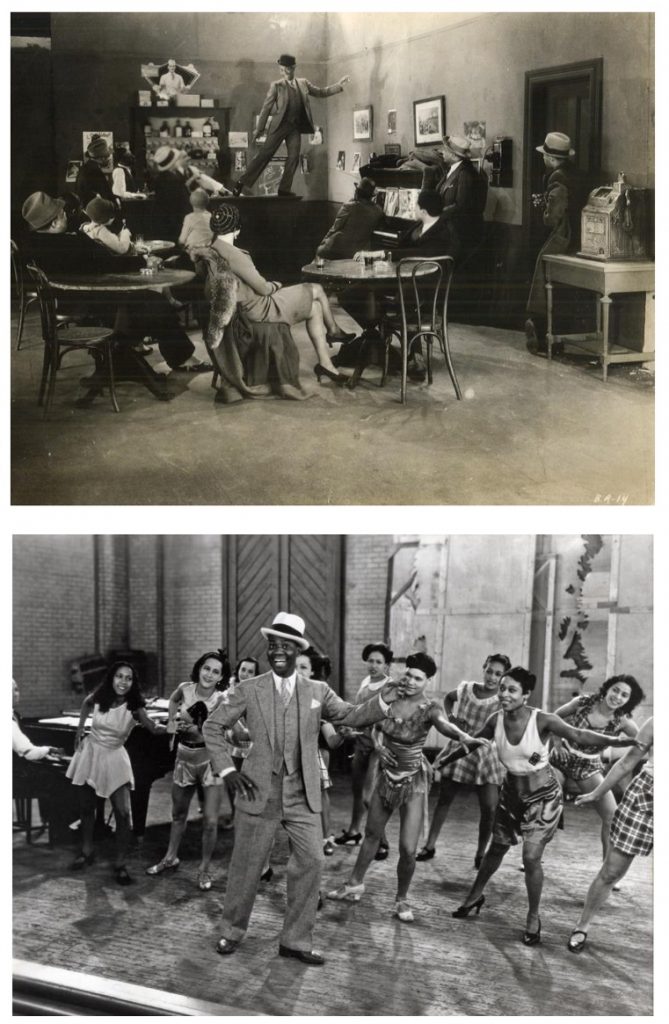
Bill Robinson performs atop a bar counter to Black patrons, backstage after performing his famous stair dance to a White audience in Harlem is Heaven, 1932. (courtesy of author); (Bottom) Bill Robi
Shiovitz explained that in the film “Honolulu” (1939) Eleanor Powell performs a “tribute” to Bill Robinson in blackface. At the time, she thought that Powell dancing in blackface was not just wrong, but “so complicated. And so it’s honestly that piece that set me off on this idea of what I call covert minstrelsy, that blackface doesn’t just need to be visible in order to operate powerfully; blackface can be invisible and its invisibility can be equally damaging.”
That sparked a memory for Shiovitz that there was a Production Code designed to prevent this kind of thing and questioned why all these discriminating images have slipped past the censors. For her graduate dissertation, Shiovitz said that she was looking at a mix of film, cartoon, and theater. For Behind the Screen: Tap Dance, Race, and Invisibility During Hollywood’s Golden Age Shiovitz focused on film and animation.
“My book is not at all my dissertation” she added, “but I did stick to that one piece with Eleanor Powell, because I think it’s so powerful, and that becomes this pivotal thing. I started researching the Production Code, what’s really written in the Code and why these films were able to slip past the censors. What is it that people gravitate to? Why do people love tap dance so much and why is it such a big part of these 1930s and ‘40s films? But more importantly, why are white people so drawn to blackface, even when they know it’s so wrong.”
Holding book signings in old movie houses is not part of a typical book tour, so I asked Shiovitz how she came up with the idea.
“With academic publishing there’s no marketing, there’s really no anything,” She began. “It seems criminal because you put in so much time and labor writing and editing these books and I wasn’t just going to let it die. Yes, it’s academic but I tried to write it in a more accessible way because I wanted the general public to get something out of it. Blackface is a term that is thrown around with such carelessness in the news so I wanted to stop those conversations and redirect them.”
She knew that she had to do something to get her book out to the public so she contacted the El Portal Theatre in North Hollywood thinking that it would be fun to do a book signing in a venue that used to be a Vaudeville theater and then a silent movie house. It turned out to be too expensive to rent and the owner would not waive the fee. Refusing to give up on this idea Shiovitz emailed roughly a hundred old theaters around the country stating, “I know this is a long shot, but I notice you are a 501(c)(3) so maybe you can write me off as a community event.”
The Alex Theatre in Glendale, California was the first to respond. Shiovitz’s book signing event is tentatively scheduled to occur there sometime this summer. “We’re going to do something a little bit different” she said. ”They do the Alex Picture Show there where they show old films. I’ll give a talk in conjunction with one of these films.” This led to her being offered tours of old theaters and she decided that it would not be too expensive to drive to other cities in California, so she began organizing a tour in this state.
The theaters that Shiovitz has booked her signing with are providing the venues free of charge and if they are non-profit organizations, they have the option of writing it off as a community event. She drove to Fresno and told me that she already has a conference in Denver in April, so she arranged a book signing there. She tacked on Portland and Seattle to this trip so she could use her Alaska air miles.
“I’m just going with my books, my tablecloth, and my sign, and setting up camp,” she said while smiling broadly. When pitching her book signing to theaters, Shiovitz explained to them, “I love theaters and I love historic preservation, so why not put these stories in the spaces where they are happening? That is what I am trying to do, to bring the stories to life in the theaters.”
I was curious how the book sales were going. “The book officially came out March 31 so there were quite a few pre-orders that were shipped out and in the first week it was a number one new release in both music and dance on Amazon.” she said “My book tour just started. Last Friday was my first theater, and then I had one talk on Sunday. I’m taking this week off and then next week I’m doing the Bagdad Portland, the Mayan in Denver and two in Seattle, all as part of my trip to the Society of Cinema and Media Studies Conference.”
Shiovitz is very interested and focused on getting tap scholarship into the world because there is so little written about it. “I want to bring an awareness to the ways in which much of American entertainment has been influenced by an Africanist aesthetic, and how so often Black artists were omitted from the credits,” She said. “So, one of my biggest goals in writing this book was to try and recuperate those histories that were lost, and put those of tap dancers and artists, jazz musicians too, in the spotlight.”
Behind the Screen: Tap Dance, Race, and Invisibility During Hollywood’s Golden Age can be purchased at Amazon, at Barnes & Noble Book Stores, and at Oxford Press.
For more information about Brynn Shiovitz, please visit her website and/or follow her on Instagram @bshiovitz and Twitter @movingsounds
#####
For our Long Beach area readers, Shiovitz is giving a free talk at the Art Theater on 4th Street in Long Beach on Sunday, April 30 from 11:00-1:00PM.
Written by Jeff Slayton for LA Dance Chronicle.
Featured image:

